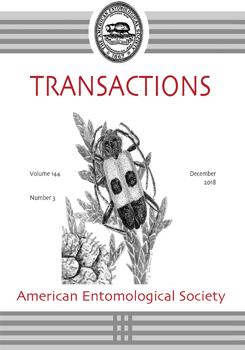Red mangroves (Rhizophora mangle) grow in and adjacent to shallow brackish water in subtropical and tropical estuaries around the world, and provide a unique arboreal habitat, often completely isolated by water from any terrestrial habitat. I surveyed ants nesting in the dead hollow vegetation, including twigs, small branches, air roots, and prop roots, of red mangroves at 30 sites around Kingston Harbour and neighboring areas along the southeastern coast of Jamaica. I collected 18 ant species (13 native and 5 Old World exotics), including three Jamaican endemics (Camponotus fugax, Cephalotes jamaicensis, and Crematogaster vicina). The most common species in the 221 samples were three native species: Crematogaster steinheili (21 sites; 64 samples), Tapinoma litorale (18 sites; 40 samples), and C. fugax (18 sites; 33 samples). The only exotic ants collected at more than one site were Monomorium floricola (13 sites; 24 samples) and Tapinoma melanocephalum (4 sites; 5 samples). The most diverse site (with eight species) was part of an enormous continuous stand of red mangrove in Salt River, within the Portland Bight Protected Area. Two Salt River sites were the only places I found the Jamaican endemic Cephalotes jamaicensis. The sites with the greatest variety of ants were relatively free of trash, including all four Salt River sites, where I collected only native ant species. However, even at sites around Kingston Harbour that were littered with large amounts of trash washed in from the sea, the red mangrove stands generally seemed healthy and harbored primarily native Jamaican ants. Protecting red mangroves in Jamaica will help conserve native Jamaican species living in this unique habitat.
How to translate text using browser tools
24 November 2018
Native and Exotic Ants Nesting in Red Mangroves of Jamaica
James K. Wetterer
ACCESS THE FULL ARTICLE
exotic species
mangroves
Native species
West Indies





